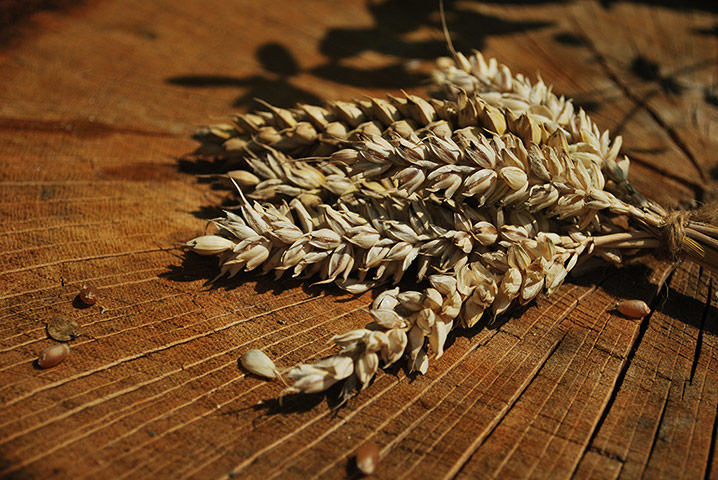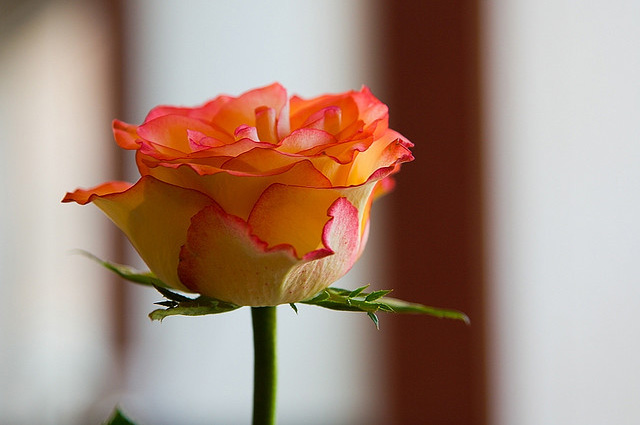Source(google.com.pk)
Computer Background Pictures Biography
The word comes from the Latin word animalis (plural animalia) and ultimately from anima, meaning vital breath, soul. With a few exceptions, most notably the sponges, animals have differentiated tissues, including a nervous system and muscles, and an internal digestive chamber. Groups with this organization may be called metazoan, though that word is also used for the animals in general. We have collected many high quality Animals Wallpapers for your desktop in various resolution. Are you in a need for quality valuable desktop wallpapers and photos for your projects, designs, sites, books, magazines, articles, commercials, etc? There are thousands of free stock desktop wallpapers and photos, mostly in high resolution. Don't pay for photos more! RepublicDomain.com is a place for free public domain photos and desktop wallpapers. Unless something is clearly marked as being copyrighted, you can assume it is free to use.AnimalsW.com opens up a world of super high resolution quality stock photography, Browse by general categories and search with keywords to find what you need. Our goal is to always be able to provide you with the best photos. We offer professional free stock photography. Download many free high resolution wallpapers, Please browse the site, and enjoy our photos.
Her official biography, Joan Sutherland: The Authorised Biography, published in February 1994, was written by Norma Major, wife of the then prime minister John Major.[16]
In 2002 she appeared at a dinner in London to accept the Royal Philharmonic Society's gold medal. She gave an interview to The Guardian in which she lamented the lack of technique in young opera singers and the dearth of good teachers.[11] By this time she was no longer giving master classes herself; when asked by Italian journalists in May 2007 why this was, she replied: "Because I'm 80 years old and I really don't want to have anything to do with opera any more, although I do sit on the juries of singing competitions."[17] The Cardiff Singer of the World competition was the one that Sutherland was most closely associated with after her retirement. She began her regular involvement with the event in 1993, serving on the jury five consecutive times and later, in 2003, becoming its patron.[18]
On 3 July 2008, she fell and broke both of her legs while gardening at her home in Switzerland.[19] She completely recovered and attended a 2009 luncheon hosted by Queen Elizabeth at Buckingham Palace in honour of members of the Order of Merit.
On 11 October 2010, Sutherland's family announced that she had died at her home at Les Avants in Switzerland the previous day of cardiopulmonary failure – "the heart just gave out...When it came to the point that she physically couldn't do anything, she didn't want to live any more. She wanted to go, she was happy to go, and in the end she died very, very peacefully."[20][21][22] Though she recovered from her fall in 2008, it led to more serious health problems.[23] A statement from her family said "She's had a long life and gave a lot of pleasure to a lot of people." Sutherland had requested a small, private funeral service.[20] Her funeral was held on 14 October and Opera Australia planned a tribute to her.[23] Artistic director of Opera Australia, Lyndon Terracini, said "We won't see her like again. She had a phenomenal range, size and quality of voice. We simply don't hear that any more."[23] Sutherland is survived by her husband, son, daughter-in-law and two grandchildren.[24][25]
Australian Prime Minister Julia Gillard said, "She was of course one of the great opera voices of the 20th century," adding that Dame Joan showed a lot of "quintessential Australian values. She was described as down to earth despite her status as a diva. On behalf of all Australians I would like to extend my condolences to her husband Richard and son Adam and their extended family at this difficult time. I know many Australians will be reflecting on her life's work today."[26]
A State Memorial Service on 9 November 2010, arranged by Opera Australia, was held at the Sydney Opera House.[27] Speakers at the service were Julia Gillard, Prime Minister of Australia; Professor Marie Bashir, the Governor of New South Wales; Moffatt Oxenbould, the former Artistic Director of Opera Australia; and Sutherland's son, Adam Bonynge. The service was broadcast live by both ABC1 television and ABC Classic FM (radio) and streamed globally by ABC News 24. Further memorial services were held in Westminster Abbey on 15 February 2011,[28] and in New York City on 24 May 2011, which was hosted by Marilyn Horne with an appearance by Richard Bonynge. In attendance were Sherrill Milnes, Norman Ayrton, Regina Resnick, and Spiro Malas.
Described as "fresh," "silvery" and "bell-like" until 1963,[29] Joan Sutherland's voice, later became "golden" and "warm",[2] music critic John Yohalem writes it was like "molten honey caressing the line."[29] In his book Voices, Singers and Critics, John Steane writes that "if the tonal spectrum ranges from bright to dark, Sutherland's place would be near the centre, which is no doubt another reason for her wide appeal."[2] According to John Yohalem, "Her lower register was a cello register, Stradivarius-hued."[29] Her voice was full and rounded even in her highest notes,[30] which was brilliant, but sometimes "slightly acid."[31]
In 1971, Time writes an article comparing Sutherland and Beverly Sills,
Originally bright and youthful-sounding, her voice darkened as she transformed herself into a coloratura. There is a suggestion of Callas' famous middle register in Sutherland's vocal center—a tone that sounds as if the singer were singing into the neck of a resonant bottle. Today the Sutherland voice towers like a natural wonder, unique as Niagara or Mount Everest. Sills' voice is made of more ordinary stuff; what she shares with Callas is an abandon in hurling herself into fiery emotional music and a willingness to sacrifice vocal beauty for dramatic effect. Sutherland deals in vocal velvet, Sills in emotional dynamite. Sutherland's voice is much larger, but its plush monochrome robs it of carrying power in dramatic moments. Sills' multicolored voice, though smaller, projects better and has a cutting edge that can slice through the largest orchestra and chorus. Sometimes, indeed, it verges on shrillness. [...] In slow, legato music, Sills has a superior sense of rhythm and clean attack to keep things moving; Sutherland's more flaccid beat and her style of gliding from note to note often turn song into somnolence. Sills' diction in English, French and Italian is superb; Sutherland's vocal placement produces mushy diction in any language, but makes possible an even more seamless beauty of tone than is available to Sills.[32]
Describing Sutherland's voice, John Yohalem writes:
On my personal color scale, which runs from a voluptuous red (Tebaldi) or blood-orange (Leontyne Price) or purple (Caballé) or red-purple (Troyanos) to white-hot (Rysanek) or runny yellow-green (Sills), Sutherland is among the "blue" sopranos – which has nothing to do with "blues" in the pop sense of the term. (Ella Fitzgerald had a blue voice, but Billie Holiday had a blues voice, which is very different.) Diana Damrau is blue. Mirella Freni is blue-ish. Karita Mattila is ice blue. Régine Crespin was deep blue shading to violet. Sutherland was true blue (like the Garter ribbon). There is a coolness here that can take on the passion in the music but does not inject passion where the music lacks it, could possibly use it.[29]
[edit]Vocal category, size and range
Although she is generally described as a dramatic coloratura soprano, "categorizing Sutherland's voice has always been extremely difficult, both the size and the sound present definitional problems [...] Aside from singing some roles popular amongst coloratura sopranos, Sutherland’s voice could not be more different."[2]
In a 1961 profile in The New York Times Magazine, Sutherland said she initially had "a big rather wild voice" that was not heavy enough for Wagner, although she did not realize this until she heard "Wagner sung as it should be."[33]
Regarding the size of Sutherland's voice, Opera Britannia praise "a voice of truly heroic dimensions singing bel canto. It is doubtful if any soprano in this repertoire has fielded quite so much power and tone as Dame Joan, and this includes Callas and Tetrazzini. The contrast with other sopranos who sing the same roles is appropriately enough stupendous, with rival prima donnas producing small pin points of sound as compared to Sutherland's seemingly endless cascades of full tone."[2] In 1972, music critic Winthrop Sargeant describes her voice "as large as that of a top-ranking Wagnerian soprano" in the The New Yorker.[34] French soprano Natalie Dessay states, "She had a huge, huge voice and she was able to lighten suddenly and to take this quick coloratura and she had also the top high notes like a coloratura soprano but with a big, huge voice, which is very rare.
Computer Background Pictures

Computer Background Pictures

Computer Background Pictures

Computer Background Pictures

Computer Background Pictures

Computer Background Pictures

Computer Background Pictures

Computer Background Pictures

Computer Background Pictures

Computer Background Pictures

Computer Background Pictures

Computer Background Pictures

Computer Background Pictures

Computer Background Pictures

Computer Background Pictures

Computer Background Pictures

Computer Background Pictures

Computer Background Pictures

Computer Background Pictures

Computer Background Pictures
Computer Background Picturer



